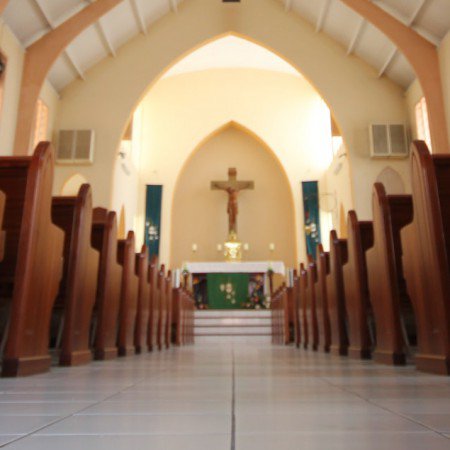On 1 April 2020 new Faculty rules came into effect. This was a substantial change that introduced List A and B works. In 2022, further changes to the legislation were introduced which requires churches to have due regard to the Church Building Council's advice on net-zero carbon where applicable, with a view to acheiving the wider Church of England net zero carbon target by 2030.
List A & B
These were defined as; List A works that could be done without permissions; and List B works that require Archdeacon's permission in the form of an Archdeacon's Written Notice.
The below document prescribes matters which may, subject to any specified conditions, be undertaken without a faculty if the archdeacon has been consulted on the proposals to undertake the matter and has given notice in writing that the matter may be undertaken without a faculty. The archdeacon may impose additional conditions in the written notice.
The range of items in the list was increased in 2020 and amended in 2024.
After consulting with DAC members and/or Advisors and the proposals are acceptable, your Archdeacon will then issue an Archdeacons Written Notice specifying the works that you may complete (the Archdeacon may set conditions on the way the works are carried out) upon receipt of the notice you can proceed. No work should be undertaken without this notice.
These lists should simplify and speed up some works in our church buildings.
Please remember your Archdeacon is always available for advice about matters concerning your church building, its upkeep and repair. You can find contact details for your Archdeacon on our Area Team webpages. This page includes a map to help you identify which Area your parish comes under.
The DAC Secretary, Suzannah Meade (contactable on 01245 294423 and dac@chelmsford.anglican.org) will be also able to guide you.
Applying for permission
The Church Buildings Team have produced a simple Faculty guidance document.
- Minor works may not require a Faculty - check with the DAC Secretary.
- Register for the Online Faculty System and begin a new Faculty application.
- Draft a Statement of Need explaining the background to the proposal and why you need to make the changes to the church now.
- Draft a Statement of Significance outlining the history of the building and the impact of your proposals on the building.
- Contact the DAC with details of your proposals and in necessary, begin initial discussions with the amenity societies.
- Prepare the documents required for submission, to be found below 'Docs Reqd'.Fill in your application form (Petition) and upload all the relevant documents online and press submit.
- Ensure that the Petitioners are correct. These are generally the Vicar and Churchwardens (not PCC members).
- The DAC Secretary will organise consultation with Historic England and the other amenity societies if necessary for your application. Please note that they have 42 days to respond.
- Only once the amenity societies have responded, will your application be taken to the next Diocesan Advisory Committee meeting.
- Once the application has been to the Diocesan Advisory Committee meeting, the DAC Secretary will issue an Notification of Advice (this is not permission to carry out works).
- Once the Notification of Advice has been issued, a fuller version of the form will be shown on the website - this should be filled in and then submitted.
- Fill in, print out, and display a Public Notice for 28 full days inside and outside the church, describing the works you intend to carry out.
- Submit your application to the Diocesan Registry.
- Once the Public Notice period has been completed (28 days), please fill in the Public Notice Certificate and press submit.
The DAC Secretary, Suzannah Meade (contactable on 01245 294423 and dac@chelmsford.anglican.org) will be able to guide you on what is required.
Consultation
Consultation should take place where works involve demolition of a listed building of any grade or its alteration or extension to such an extent as would be likely to affect its character or significance as a building of special architectural or historic interest (this includes significant re-ordering of the interior and especially where fixtures, fittings and furnishings are to be permanently removed); or they involve demolition affecting the exterior of an unlisted building in a conservation area. Whether a national amenity society is likely to have an interest in works will depend on the age of the building (or the relevant part of it) and the likely effect on it of the proposed works. For example, the removal of Victorian pews from a medieval building is likely to be of greater interest to the Victorian Society than to SPAB.
The DAC Secretary can help you with the criteria for consultation with Historic England and the amenity societies, but formal consultation is a defined process which happens when all designs and proposals are finalised. The DAC Secretary will organise this.
There are six National Amenity Societies: the Council for British Archaeology, the Society for the Protection of Ancient Buildings (SPAB), the Georgian Group, the Victorian Society, the Twentieth Century Society and Historic Buildings & Places.
More information can be found here and if in any doubt, contact the DAC Secretary, Suzannah Meade (01245 294423 and dac@chelmsford.anglican.org) who will be able to guide you.

DAC meeting dates
Submission of applications prior to the next meeting date does not guarantee inclusion on that meeting - the DAC Secretary needs to review your application and sometimes formal consultation with the amenity societies (a 42 day process) needs to take place. The DAC Secretary can help you with likely timelines for your application.
2025 DAC meeting dates
- 22 July
- 2 September
- 11 November
- 16 December
2026 DAC Meeting dates
- 3rd February
- 7th April
- 9th June
- 28th July
- 29th September
- 1st December


